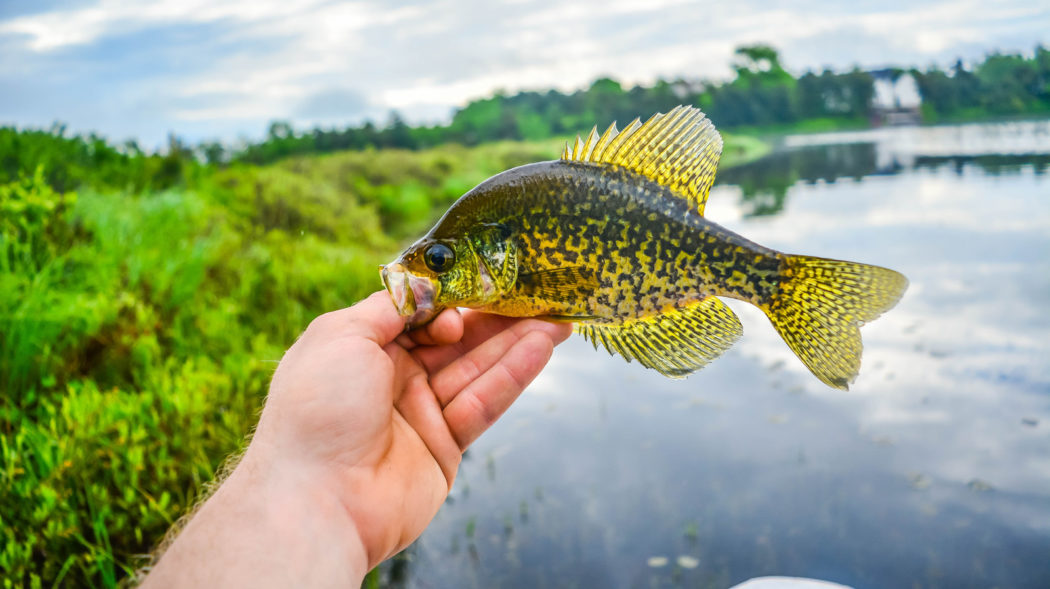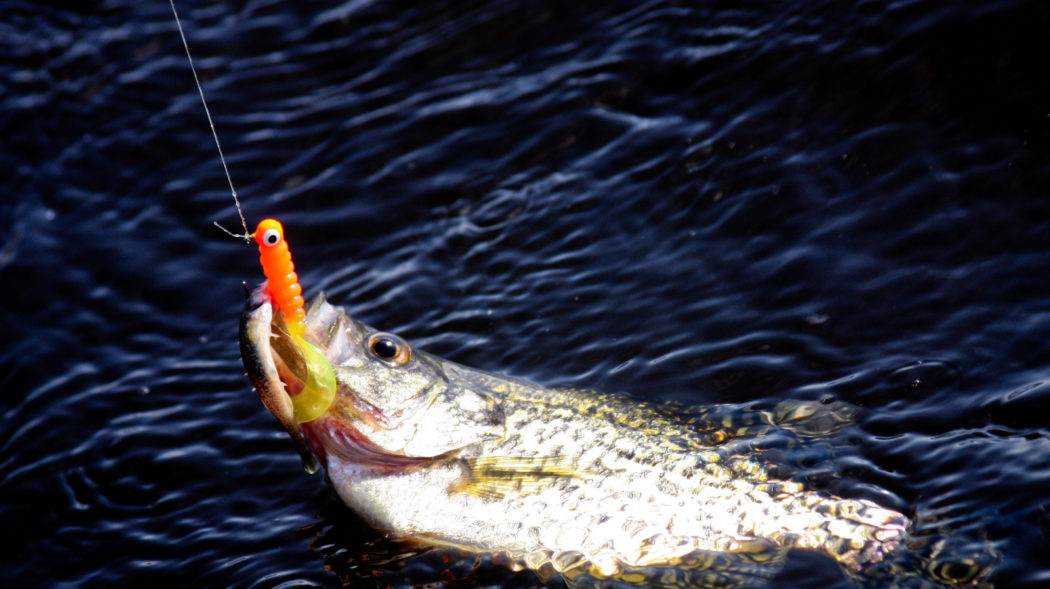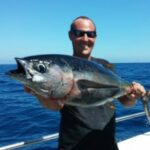Summer Crappie Fishing Tips

In this article, I’ll take you through a few quick, reliable tips for catching crappie during the hot summer months (check here for ice fishing for crappie). You may also want to read this article that we have about how to fish crappie.
In early spring, fishing for crappie is like fishing in a goldfish bowl. They’re spawning in the shallows, they’re ravenously hungry and bite anything they think will fit in their mouths. Then, as soon as the weather warms into the high-80’s they’re gone. Poof! Nowhere to be found.
Unless you know where to look, and how to hook.
Here, I’m going to cover:
- Crappie behavior patterns
- Where to find them
- What gear to use
- What bait crappie go for
- How to reel ‘em in
If you are also interested to know the best time of the day for northern pike fishing, you can read this article here.
Summer Crappie Behaviors
Let me take you on a journey into the mind of the crappie.
After the frenzy of the breeding season is over, warming water temperatures signal the crappie to migrate to where it’s cooler. They like cover and shady places where they can ambush their prey as it swims by.
Crappie head out to deeper water at this time. Instead of resting at the bottom or hovering near the surface, they tend to congregate in small groups in about the middle of the water column. Here they hold relatively in one place, suspended in the water.
Where are they hiding?
Crappie love shade. Look for crappie under structures like docks, bridge pillars, and submerged trees in deeper parts of the water.
Go deep. Near the beginning of the summer, you can find crappie close to their spawning grounds in deeper water. Look around drop-offs and deep gravel beds near shallows. If you successfully fished a spawning ground earlier in the year, chances are you’ll find them not too far off.
Tributary mouths and channel drop-offs. Flowing water tends to be cooler, so you’ll find crappie hanging down near these points. It’s common to find them at depths between 12 – 18 feet.
Hiding in cover. Noise from boating activity spooks crappie into cover. Look for submerged trees and driftwood snarls to drop your line into. Your best bet is to fish early in the day before the boats take over the lake.

Gear and Bait for Summer Crappie
When gearing up for crappie, know this one important fact: They have very delicate mouths. Ergo, if you set the hook hard – like for bass or catfish – you’re going to rip the hook right out of their mouths.
Keeping that in mind, here is a list of equipment ideal for reeling in crappie:
- A light action rod
- 4 lb. monofilament line
- A slip bobber and stopper
- A couple of #5 slip shot weights
- Straight long-shanked J-hooks (for live minnows)
- Dropshot bait, crappie magnet, or other plastic baitfish jigs
- Crappie nibbles (for dressing jigs – optional)
Why such a light line?
Crappie can spook if they see the line, which is why I recommend a 4 lb. monofilament line or slightly lighter.
Why a light rod?
A light action rod will give you a better feel for a bite, for one. For another, it provides the right amount of jigging action when using jig baits or soft lures.
What baits do crappie like best?
Crappie are sight-feeders. They can’t resist live baitfish or anything that looks like them.
If you can, take both live bait and jigs with you. You never know what the fish will go for. Setting up two poles with each kind of bait will increase your bite chances.
Good types of crappie jigs:
- Shad or paddle-tail baits
- Marabou jigs
- 2-tailed jigs like Crappie Magnets
- Dropshot bait
Crappie will be less likely to spit out your jig if you make it taste like bait. Dress your jigs with Crappie Nibbles to make them extra irresistible.

Why the bobber stopper?
If you’re fishing from a boat or directly off a dock, you don’t need a bobber – just drop the line straight down and let out the line until you snag a bite.
If you’re casting out, a bobber will limit the depth your rig sinks after you cast. Place a stopper roughly 12 feet from the eye of your hook. The slide bobber will stop there, letting you know where your rig is suspended.
A stopper can be a string, rubber band, or commercial stopper. Whatever works for you.
Additional Tips
To keep your minnows alive and active, I suggest hooking them through the nostril. Insert the hook through the mouth and up through one nostril – not through the head or the gills, as crappie won’t go for dead food.
Remove dead minnows from the water immediately.
Adding a couple of split shots a few inches above the minnow will keep it from escaping to the surface.
Don’t waste your time fishing in one spot. If you don’t land a bite in 10 or 15 minutes, move on. Either the fish aren’t there, or they just aren’t hungry.
Take it slow. Crappie are more cautious in the summer and need extra convincing before they bite. If fishing from a boat, slow troll along deep shaded water or near cover at an average of 2 mph.
In Conclusion
In a nutshell, catching crappie in the summer months isn’t as hard as it seems. You just need to know where to look.
Keep these 4 useful tips in mind, and you’ll have a whole mess of this delicious panfish in no time:
- Fish around structures and in deeper, cooler water. Cover like bridges, docks, and submerged trees make ideal hiding places for crappie. They will be suspended in the middle of the water column, usually between 12 – 18 feet deep.
- Use light action rods and 4lb. monofilament, to keep your line invisible and allow for subtle jigging.
- Crappie love minnows and anything that wiggles like them. Bring live minnows, 2-tailed jigs, shad jigs, drop shot, and other similar soft plastic and hand-made lures.
- Take it slow, but don’t waste your time fishing one spot for too long if nothing bites. If you’re fishing from a boat, drop your line straight in the water without a bobber. If you’re casting from shore, use a bobber to help you gauge depth. Adjust your depth until you find the sweet spot where the crappie are hanging out.
As an Amazon Associate, Fishermen's Angle earns from qualifying purchases. We get commissions for purchases made through links in this post.
